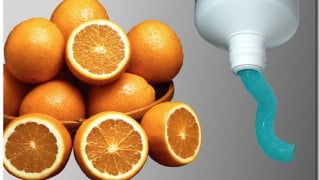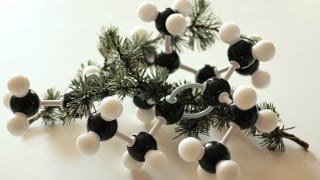Periodic table, bonding, acids, bases, pH for GCSE & A-level
Learn all about acids, bases, and pH in this comprehensive course for GCSE and A-level students. Understand the chemical behavior of acids and bases, the theories behind their classification, and how to calculate pH. Explore the periodic table and chemical bonding to gain a deeper understanding of how acids and bases work. With solved quizzes and exercises, this course is perfect for parents and guardians of students aged 16-18. Start your journey to mastering acids, bases, and pH today!
What you’ll learn
- Properties of atoms and how they vary in the periodic table
- Structure of the atom and periodic table
- Bonds between atoms – chemical bonds – ionic bond
- Bonds between atoms – chemical bonds – covalent bond
- Chemical reactions and redox reactions
- Defining acids and bases and their classification
- The Bronsted-Lowry protolytic theory of acids and bases
- Defining pH, pH calculation formula and the pH determination of solutions
- Chemical reactions of acids and bases
- Solved exercises, problems and questions with acids and bases at GCSE level
- Solved exercises, problems and questions with acids and bases and periodic table for International Baccalaureate (IB)
Show moreShow less
All you need to know about acids, bases and pH for GCSE and A-level. This course includes the definitions of acids and bases in terms of their chemical behavior.
At the end of the course you should be familiar with:
1. What acids and bases are in terms of their chemical behaviour
2. The chemical and molecular mechanisms of acidity and basicity
3. Which chemical species are acids and which are bases and how chemical bonding determines whether a molecule is an acid or a base
4. What pH is, its relevance in chemistry and in everyday life and how to calculate the pH of any solution of acid or base by knowing the nature of the acid/base and its concentration.
Two important theories have been proposed to qualify a substance as an acid or a base. These are the proton-transfer Bronsted-Lowry theory and the electron-pair-transfer Lewis theory. According to the proton-transfer theory, an acid is a chemical entity (molecule, ion or radical) capable of donating on or more protons (hydrogen ions H+) and a base is a chemical entity (molecule, ion or radical) capable of accepting one or more protons. According to the Lewis theory, an acid is a chemical entity capable of accepting a pair of electrons, while a base is a chemical species capable of donating a pair of electrons. Note that all Bronsted bases are also Lewis bases, but not all Bronsted acids are also Lewis acids.
This course offers an insight in the structure and organization of the periodic table of elements and how the physical and chemical properties of the chemical elements vary in the periodic table (the law of periodicity). All concepts needed (such as electronegativity or valence/oxidation number) are explained and discussed in detail before the concepts of acid and base and pH are introduced. This is in order to ensure a complete and an in-depth understanding of what acids and bases are and how they work and why they do work in the way they do. The course also offer an in-depth analysis of how chemical bonds are formed and their properties in order to understand how acids and bases work.
This course also introduces the notion of pH, which is the negative decimal logarithm of the molar concentration of the H+ ions in a solution. pH is basically the power (or the exponent) of 10 with the reverted sign from the molar concentration of hydrogen ions. Please get used to writing a small ‘p’ next to a capital ‘H’ when writing down this parameter. pH is widely used in everyday life in order to determine acidity or basicity of a solution, from household solutions such as vinegar or bleach to industrial or laboratory solutions. pH is also very important in biological systems (living organisms) since the reactions which determine and sustain life are strongly pH-dependent. The pH scale most often runs from 0 to 14, where 7 is neutral (e.g. pure or distilled water). A pH value less than 7 indicates an acidic solution, while a pH value greater than 7 indicates a basic (or alkaline) solution. Note that the pH scale is a decimal logarithmic scale (and not a linear scale) and each unit is 10 times more or less acidic/basic than the previous/next one (depending in which direction you are going). Thus, a solution with a pH of 3 is not two times more acidic than a solution with a pH of 6, but a thousand times more acidic (or 10 to the power of 3, since 6-3 = 3). The pH scale in the 0 to 14 format is used for dilute solutions (up to 1 mole/liter strong acid or strong base). Concentrated solutions of strong acids or strong bases would have a pH value less than 0 or greater than 14 respectively. For instance, a solution containing 10 moles of strong acid dissolved in one liter of water would have a pH value of -1 and a solution containing 10 moles of strong base dissolved in one liter of water would have a pH value of 15. Due to solubility reasons, a pH value of less than -2 or greater than 16 could not be achieved, since the aforementioned values already involve several kilograms of substance dissolved in just one liter of water. Consequently a pH value of -3 and 17 would involve several tens of kilograms of substance dissolved in just one kilogram of water, which is theoretically impossible, even for the most soluble substances.
Last, but not least, the course provides 11 solved GCSE quizzes about acids and bases and 19 solved GCSE quizzes about periodic table and bonding. Additionally, 6 solved A-level quizzes on acids an bases are provided.
Who this course is for:
- Parents and guardians of GCSE and A-level students
- Parents and guardians of pupils aged 16-18
User Reviews
Be the first to review “Periodic table, bonding, acids, bases, pH for GCSE & A-level”
You must be logged in to post a review.







There are no reviews yet.